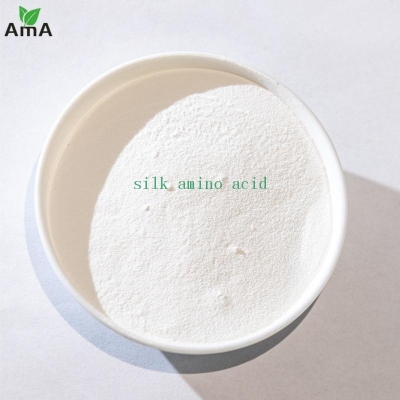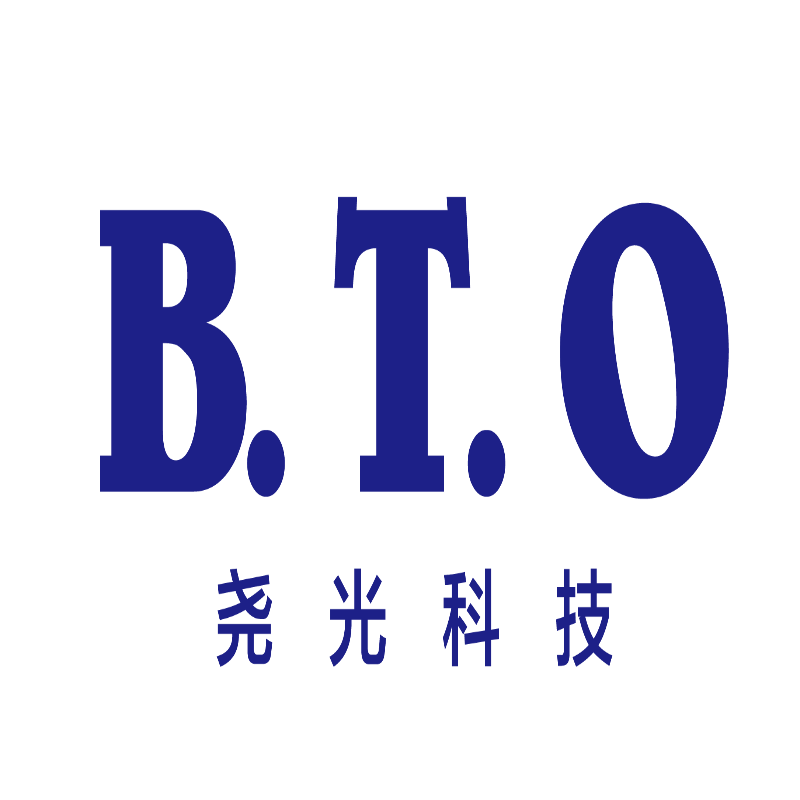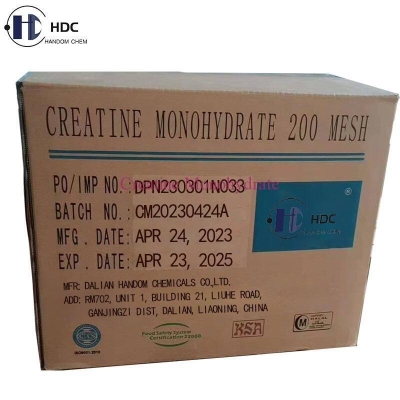The methionine "bottleneck" breakthrough is on the project.
-
Last Update: 2020-07-30
-
Source: Internet
-
Author: User
Search more information of high quality chemicals, good prices and reliable suppliers, visit
www.echemi.com
;.although imported products temporarily unified the world, national products are difficult to match, but many enterprises have been in Moquan slap to develop methionine synthesis technology" According to statistics from the Foreign Amino Acid Industry Association, the world's total production of methionine in 1993 was only 260,000 tons, in 1999 it was 450,000 tons, and in 2004 it exceeded the million tons mark, thus becoming the second amino acid product in the world with an annual output of more than 1 million tons.. Because methionine is an important raw material of various compound methionine, in the field of human medicine and animal feed have a wide range of should, especially in recent years, the rapid development of the global breeding industry, so that the total demand for methionine is rising. "import salutation is growing rapidlyThe synthesis process of methiomenine in China is originally to meet the needs of the domestic pharmaceutical preparation industry. In 1959, Tianjin Hebei Pharmaceutical Factory took the lead in building the first pharmaceutical-grade methionine (L-methionine) production line, with an annual production capacity of 200 tons, the actual output of only 60 to 70 tons; For a long time, Tianjin Hebei Pharmaceutical Factory has been the domestic manufacturers of methionine raw materials, until today, its methionine production is still only a few dozen tons. Combined with the output of other domestic manufacturers, it is estimated that the total production of medicinal methionine in the country is only 200 to 300 tons. Internationally, China is still an importer of methionine.. Since the grain production for many years harvest, China's livestock and poultry breeding industry with unprecedented rapid development, in just a few years has become the world's second largest breeding industry after the United States, and methionine as the most important feed additives, domestic demand is rising. However, the domestic market so far only medicinal grade methionine and no feed grade methionine, simply can not meet the domestic breeding industry on the huge demand for methionine. Since 2000, China has become the world's feed-grade methionine import and consumption of the second largest country.. Due to the rapid development of the breeding industry, the global methionine production is also showing a high-speed growth trend. According to statistics from the Foreign Amino Acid Industry Association, the world's total production of methionine in 1993 was only 260,000 tons, in 1999 it was 450,000 tons, and in 2004 it exceeded the million tons mark, thus becoming the second amino acid product in the world with an annual output of more than 1 million tons.. In the international market, methionine is dominated by several European and Japanese companies, including France's Rhone-Planck, Germany's Degussa, the United States's Novus Internationanls and Japan's Toyo Caoda Co., Ltd., which produce about 90 percent of the global methionine market. The United States is the world's largest consumer of methionine, its methionine consumption accounts for about 30% of the total global sales of methionine, compared with China's methionine accounted for only 8% to 10% of the international market share.. (NextPage). There are two types of methionine raw materials: medicinal grade (L-methionine) and feed grade (DL-methine). It is understood that China currently has L-methionine production approval manufacturers have reached more than a dozen, the national total production capacity of pharmaceutical-grade methionine has reached 1200 tons, but the actual annual output of only 700 to 800 tons, basically can meet the domestic demand for compound amino acid infusion. From this point of view, what our country really lacks is not L-methionine but DL-methine. With the rapid development of domestic breeding industry, the domestic demand for DL-methine is growing in geometric series. Due to the difficulty of DL-methionine synthesis process, the import of DL-methine in China has been growing at a high rate in the past few years.. Although the quantity of methionine imported in China has fluctuated over the years, the overall trend is on the rise. Japan, Germany, France, Belgium and Spain have become china's top five suppliers of methionine in terms of imports.. Feed level supply tightDL-methine is divided into solid and liquid two categories, mainly in China's market to solid powder mainly, liquid agent less. In terms of absolute sales quantity, China's methionine market has long been a "foreign product" world, which has both the reasons for the existence of barriers in the synthesis process, but also foreign companies because of the master of key technologies and their products have price competitive advantage reasons.. Due to the rising demand for DL-methionine in the domestic breeding industry, since last year, the domestic feed-grade methionine market supply is tight, coupled with the international oil market prices once soared and led to a rise in the price of oil downstream products (synthetic methionine raw materials are from acryform, methanol and hydrogen sulfide, etc.), so that methionine production costs are also rising.. As China's DL-methine can only rely on imports so far, so the ups and downs of foreign markets will directly affect China's supply. Since the second half of last year, the international methionine market has shown a high-priced operating situation, resulting in high domestic methionine prices. It is reported that in the first half of this year, DL-methionine import prices have been generally raised by 2 to 3 yuan / Kg, and the supply is very tight. However, the end market price of methionine has consistently failed to keep up with the increase in cost prices, thus affecting DL-methionine production, such as the global annual production of methionine in 2006 has reached 900,000 tons, but last year only 650,000 tons, only 75% of the previous year.. According to reports, the supply of DL-methine is not unique to the Chinese market, but a global problem.imports this year does not decreaseaccording to statistics published by the customs, from January to May this year, China's cumulative imports of DL-methionine more than 37,000 tons, a net increase of 22% over the same period last year. However, with the arrival of the summer breeding industry off-season, China's import of methionine slowed down, in June the import of DL-methine quantity of only 6149 tons, compared with the previous five months average of more than 7,000 tons. Since July, imports of methionine have rebounded to 7,926 tons. By the hot August, the import heat continued to rise to 7,702 tons, and in September it was more than 8,000 tons.. (NextPage). Generally speaking, summer for feed sales off-season, why in the traditional import methionine off-season but there is an import boom? According to industry analysis, one of the reasons is that domestic methionine dealers worry that as the price of oil will drive up the price of methionine, so early inventory, ready to sell in the autumn and winter peak season; Although the current domestic market meat and poultry egg prices have fallen, but next spring, the domestic market will usher in meat and poultry egg sales season, so the breeding industry must prepare early, when the demand for DL-methionine will rise, there are predictions that this year's domestic DL-methionine demand growth rate will reach about 8%.. In fact, China is not entirely "methionine pure importer." As reported by domestic media, in the past few years, China still has a small amount of methionine exports, such as China's total export of methionine 680 tons in 2004, 2005 export volume of 790 tons, in 2006 834.6 tons, in 2007 estimated at about 800 to 900 tons (due to no relevant statistics). From this point of view, China's export of methionine is small but growing every year.. The project is boomingtwo years ago, China Blue Star Group, a group of China Chemical Group, acquired France's Andesu for 400 million euros (then nearly 4 billion yuan) to acquire the liquid methionine synthesis production technology and equipment. Industry insiders have affirmed the merger of China Chemical Group, because Western countries have been tightly blocking methionine chemical synthesis technology. Industry analysis, once Our technical personnel have mastered France's advanced methionine synthesis technology and digested and absorbed, not only can sleep for many years in Tianjin Hebei methionine plant "from the dead", but also drive a large number of domestic DL-methionine enterprises rise, thus completely breaking the long-term monopoly of large Western companies DL-methionine in China's methionine market situation.. In addition to the introduction of France's Andesu company a full set of DL-methionine synthesis technology, some domestic enterprises are also actively planning their own development and production of DL-methionine. According to domestic media reports, Hebei Xinji Chemical Group plans to build an annual output of 30,000 tons of DL-methine production line. Shandong Tianyi Technology Co., Ltd. has built an annual output of 300 tons of synthetic DL-methionine pilot workshop, once the technology matures will expand the production scale of methionine. Liaoning Benxi Chemical Group is also planning a DL-methionine production line, the project is currently in the preliminary preparation stage. Zhejiang, Guangdong, Hubei and Shanghai have expressed strong interest in the synthetic methionine project. According to domestic media reports, a large sulfur-containing natural gas field has been discovered in Sichuan Province (experts estimate that the field can recycle 1.5 million tons of sulfur per year), and the relevant departments in Sichuan Province are planning a large-scale project with an annual output of 50,000 tons of DL-methionine, and actively attract investment at home and abroad. Once Sichuan Province has invested a total of 2 billion yuan in the DL-methine project, will completely change China's simply import edilene situation. It has also been reported that Anqing City, Anhui Province, plans to build a 50,000-ton solid methionine project (initially envisaged a total investment of 1.4 billion yuan) to meet the needs of the breeding industry in Eastern China. The city of Putian, Fujian Province, plans to build an annual production line of 20,000 tons of synthetic methionine. Gansu Liangzhou plans to build an annual production line of 5000 tons of synthetic methionine.. It is understood that the basic raw materials of synthetic methionine are toxic and harmful chemical raw materials such as acryform, hydrogen sulfide and hydrogen cyanide or sodium cyanide, etc. , before China on how to deal with the waste water produced by synthetic methionine has no effective program. Now China not only the basic raw materials of synthetic methionine can be self-resolved, but also can develop and produce some key synthesis devices, chemical wastewater treatment methods have matured. This laid the foundation for the large-scale production of methionine. Coupled with Hubei eight peak company has successfully developed 2000 tons of L-methine production of new technology, so, domestic chemical experts believe that the constraints of China's synthetic DL-methionine "bottleneck" has long ceased to exist.. Secondly, China's large population, the demand for meat and poultry eggs is huge, so the domestic breeding industry for one of the important feed additives of methionine demand will be increasing day by day. With the continuous improvement of people's living standards, china's breeding industry will grow at a faster rate in the future, so the demand for methionine will continue unabated. I believe that with the introduction of French methionine production technology digestion and absorption, the fastest two or three years, China is expected to become the world's largest methionine production..although imported products temporarily unified the world, national products are difficult to match, but many enterprises have been in Moquan slap to develop methionine synthesis technology" According to statistics from the Foreign Amino Acid Industry Association, the world's total production of methionine in 1993 was only 260,000 tons, in 1999 it was 450,000 tons, and in 2004 it exceeded the million tons mark, thus becoming the second amino acid product in the world with an annual output of more than 1 million tons.. Because methionine is an important raw material of various compound methionine, in the field of human medicine and animal feed have a wide range of should, especially in recent years, the rapid development of the global breeding industry, so that the total demand for methionine is rising. "import salutation is growing rapidly The synthesis process of methiomenine in China is originally to meet the needs of the domestic pharmaceutical preparation industry. In 1959, Tianjin Hebei Pharmaceutical Factory took the lead in building the first pharmaceutical-grade methionine (L-methionine) production line, with an annual production capacity of 200 tons, the actual output of only 60 to 70 tons; For a long time, Tianjin Hebei Pharmaceutical Factory has been the domestic manufacturers of methionine raw materials, until today, its methionine production is still only a few dozen tons. Combined with the output of other domestic manufacturers, it is estimated that the total production of medicinal methionine in the country is only 200 to 300 tons. Internationally, China is still an importer of methionine. . Since the grain production for many years harvest, China's livestock and poultry breeding industry with unprecedented rapid development, in just a few years has become the world's second largest breeding industry after the United States, and methionine as the most important feed additives, domestic demand is rising. However, the domestic market so far only medicinal grade methionine and no feed grade methionine, simply can not meet the domestic breeding industry on the huge demand for methionine. Since 2000, China has become the world's feed-grade methionine import and consumption of the second largest country. . Due to the rapid development of the breeding industry, the global methionine production is also showing a high-speed growth trend. According to statistics from the Foreign Amino Acid Industry Association, the world's total production of methionine in 1993 was only 260,000 tons, in 1999 it was 450,000 tons, and in 2004 it exceeded the million tons mark, thus becoming the second amino acid product in the world with an annual output of more than 1 million tons. . In the international market, methionine is dominated by several European and Japanese companies, including France's Rhone-Planck, Germany's Degussa, the United States's Novus Internationanls and Japan's Toyo Caoda Co., Ltd., which produce about 90 percent of the global methionine market. The United States is the world's largest consumer of methionine, its methionine consumption accounts for about 30% of the total global sales of methionine, compared with China's methionine accounted for only 8% to 10% of the international market share. . (NextPage) . There are two types of methionine raw materials: medicinal grade (L-methionine) and feed grade (DL-methine). It is understood that China currently has L-methionine.
This article is an English version of an article which is originally in the Chinese language on echemi.com and is provided for information purposes only.
This website makes no representation or warranty of any kind, either expressed or implied, as to the accuracy, completeness ownership or reliability of
the article or any translations thereof. If you have any concerns or complaints relating to the article, please send an email, providing a detailed
description of the concern or complaint, to
service@echemi.com. A staff member will contact you within 5 working days. Once verified, infringing content
will be removed immediately.







